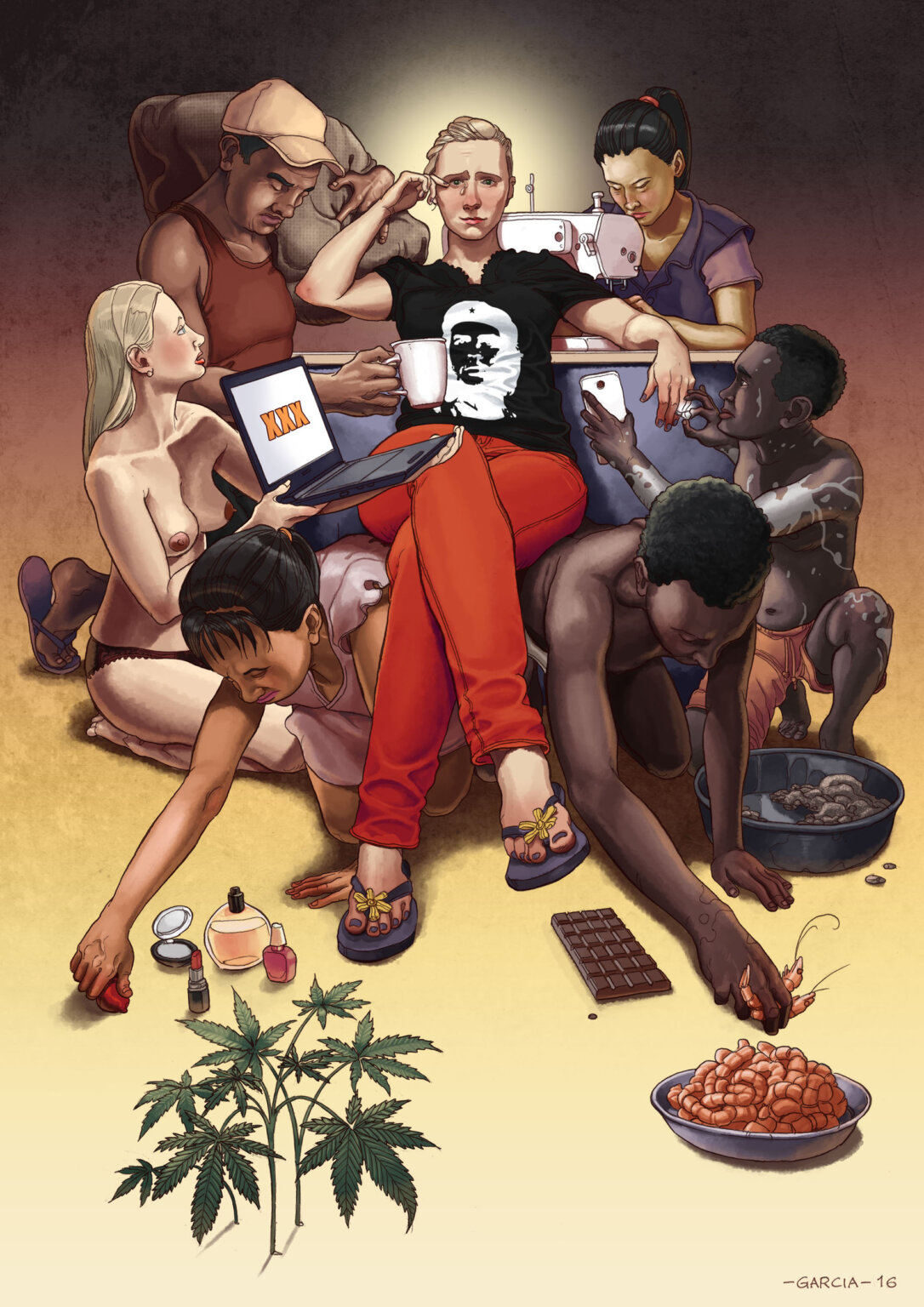- About
- Topics
- Picks
- Audio
- Story
- In-Depth
- Opinion
- News
- Donate
-
Signup for our newsletterOur Editors' Best Picks.Send
Read, Debate: Engage.
| August 05, 2019 | |
|---|---|
| topic: | Slavery |
| tags: | #human trafficking, #modern slavery |
| by: | Murat Suner |
Each year more than 800,000 people are trafficked across international borders – mostly leading them into various forms of modern slavery. The victims of this type of slavery are usually coerced into working as sex slaves, forced to work for free in dangerous working conditions or sold to other people and made to do any number of things.
According to the International Labour Organization , at any given time in 2016 over 40 million people were in modern slavery, around 25 million were in forced labour and 15 million were married to people against their will. You'd be forgiven for thinking that these statistics have been dug out of a history book, but they're only from 3 years ago. The ILO also estimated that every 1 in 4 victims were children.
Victims of this type of slavery can look just like the rest of us, so it can be hard to see any obvious signs on all of them. However, certain behavioural characteristics (and physical attributes) may alert you to a person in danger, and perhaps you could save them from further suffering by alerting an authority.
According to the Nevada Attorney General's website a person may be a victim of trafficking if they;
Human trafficking can take many forms. However, a few examples include:
These poachers can target anyone who is exploitable, whether these victims are in their own country or abroad. However, according to the United Nations Office for Drugs and Crime 79% of all human trafficking victims are women and children. Furthermore, people from countries with a high level of organised crime are even more vulnerable to this kind of slavery.
The report goes on to state that in 2 years over 500 different trafficking flows were detected and victims were made up of 137 different nationalities, meaning that this type of criminal activity can happen almost anywhere.
Those people who have been victims of modern day slavery can end up having lifelong psychological issues, derived from their time as a slave.
These people have likely suffered from excessive force by their captors, and degradation; both of these factors can negatively shape the rest of their lives and force them to struggle to assimilate back into normal society.
Furthermore, victims can experience trauma as a result of; the abusive relationships they had if they were in the sex slave industry, domestic violence from their sham marriages where they were were not respected as a human being, gang rape, prolonged exhaustion from being overworked.
The trauma they experience can lead to depression, high levels of anxiety, self-loathing and substance abuse to deal with the pain inside them.
If this was not enough, some sex slaves can pick up HIV/AIDS from having non-consensual, unprotected sex with multiple partners.
Many nations have their own independent anti-trafficking laws and acts, however, the UNODC has made great efforts to offer consultation and help to nations on how to structure laws to prevent this criminal activity, and to protect its victims, even developing a toolkit to combat this type of criminal activity .
In 2000, the United Nations General Assembly adopted the UNODCs protocol against this criminal activity, and via their 'Global Programme against Trafficking in Persons' they hope to tackle the modern day slavery issue that is plaguing our global society.
By copying the embed code below, you agree to adhere to our republishing guidelines.
